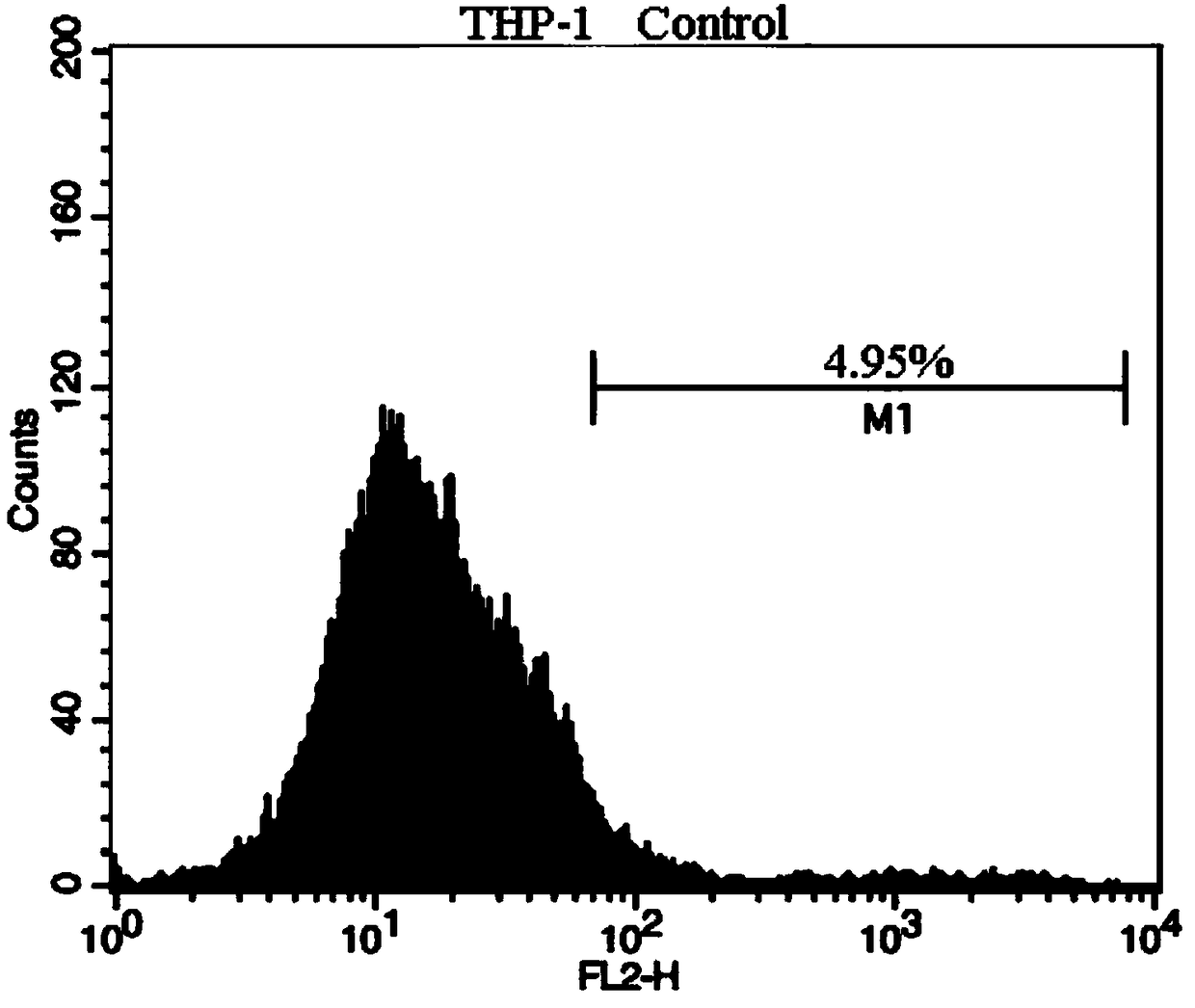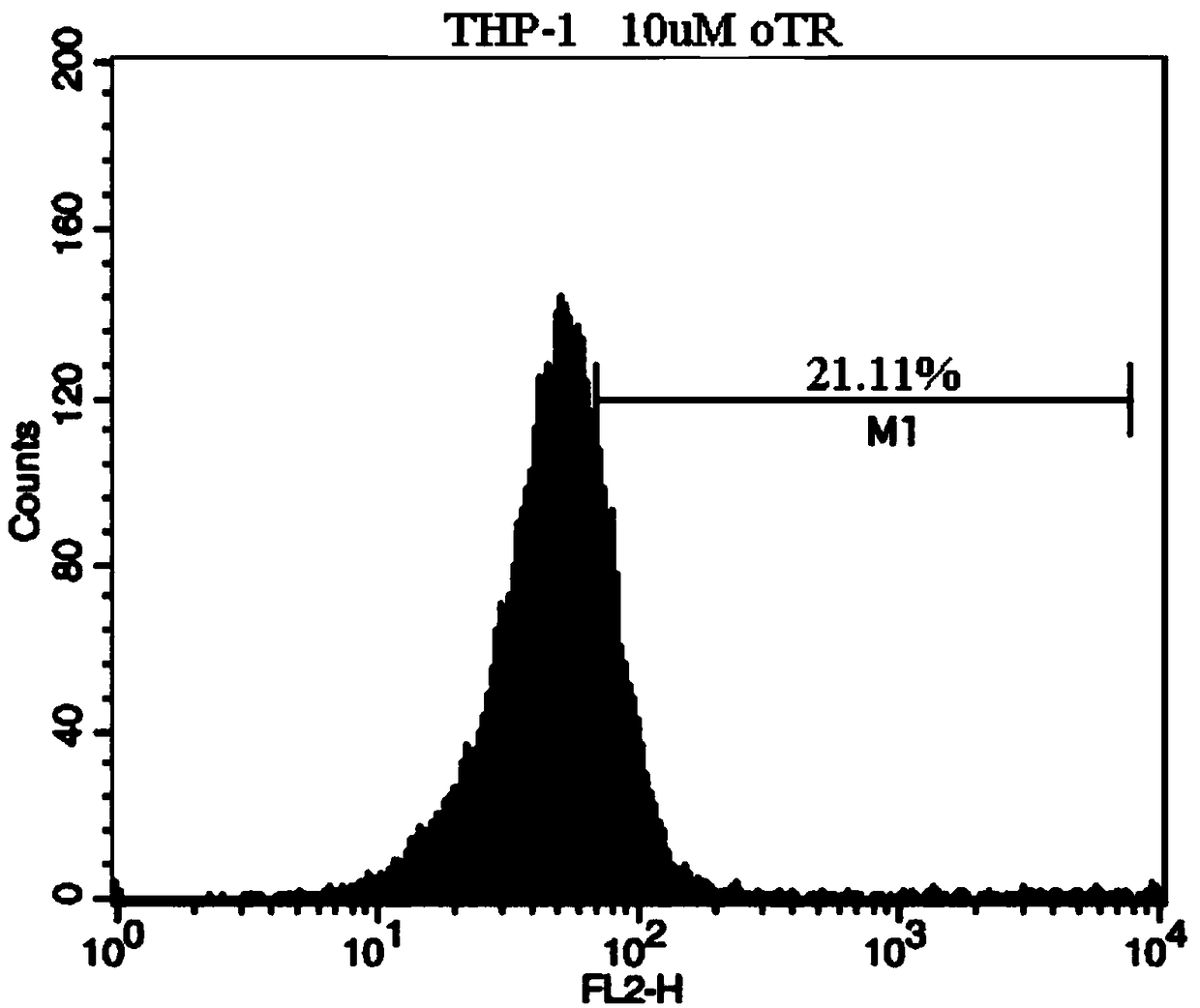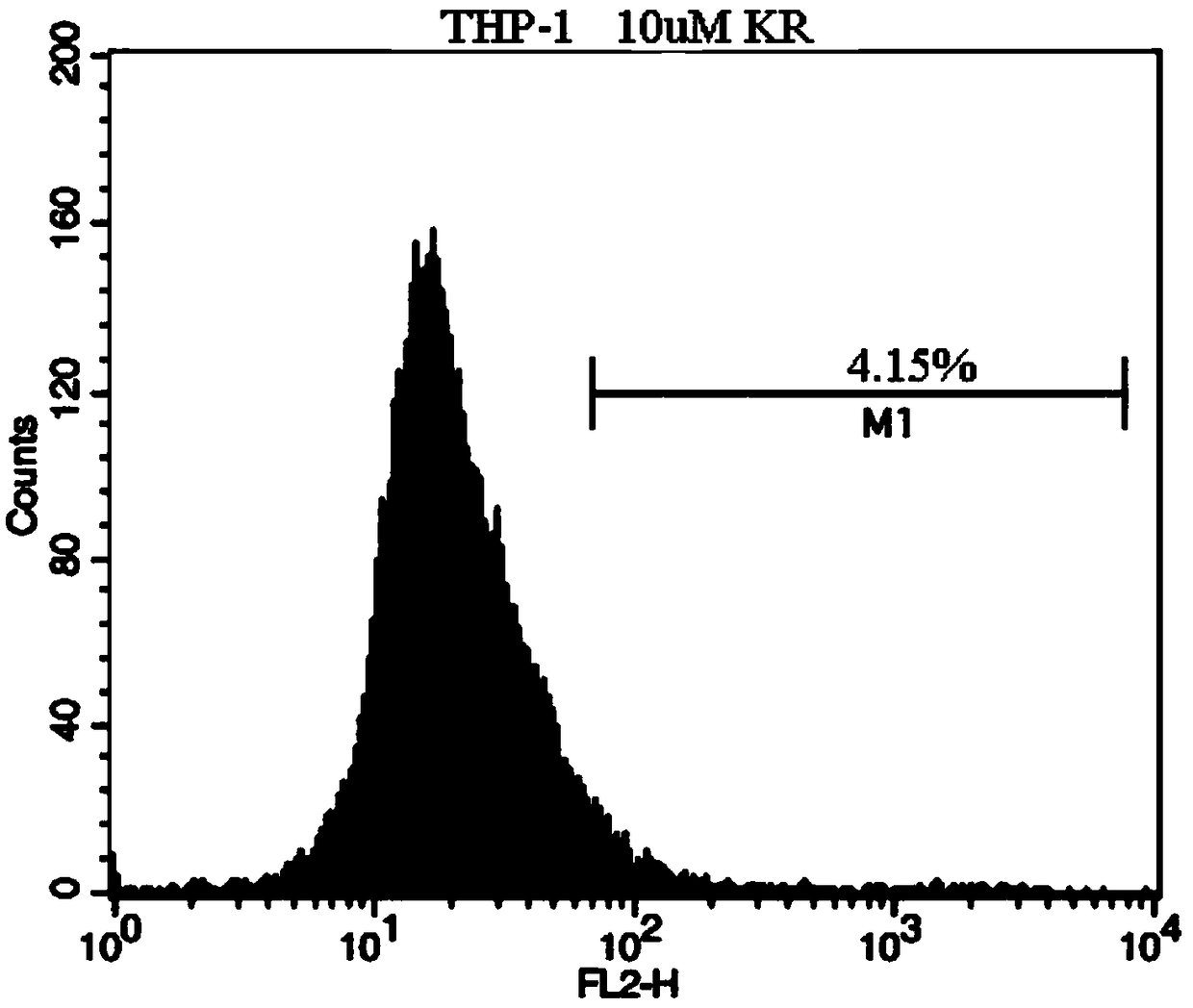Application of nucleoside cytokinin in human acute myeloid leukemia M4 cells
A cytokinin and acute leukemia technology, applied in the application field of nucleoside cytokinin in human acute myeloid leukemia M4 cells, can solve the problems of no research on promoting differentiation, unstable curative effect, and easy relapse of patients , to achieve significant in vitro proliferation inhibitory activity
- Summary
- Abstract
- Description
- Claims
- Application Information
AI Technical Summary
Problems solved by technology
Method used
Image
Examples
Embodiment 1
[0021] Effects of oTR, KR, BAR and iPR on the expression of CD11b in HL-60 cells: The resuscitated human M4 leukemia cell THP-1 was cultured in a medium containing 10% FBS inactivated fetal bovine serum, 1% penicillin / 1% streptomycin (double antibody) sterile DMEM medium, placed in a suspension cell bottle, at 37 ° C, 5% CO 2 and cultured in an incubator under saturated humidity, and the cells grow to about 70%-80% for one passage. Continue culturing to obtain active human leukemia cells, and collect the cells. 5×10 that will be in logarithmic growth phase 4 Each cell was seeded in a 24-well plate containing 1ml of DMEM culture medium in each well. According to the experimental requirements, corresponding concentrations of oTR, KR, BAR, and iPR were added to each group, and they were incubated in an incubator for 36 hours. Wash three times with FBS and PBS. Cells were incubated with blocking antibody for 15 min at room temperature, then washed after incubation with anti-hum...
Embodiment 2
[0023] Morphological changes of HL-60 cells induced by oTR, KR, BAR and iPR: Actively growing THP-1 cells were treated with 10 μM oTR, KR, BAR and iPR for 36 h, and the cells were collected and washed three times with PBS containing 0.2% FBS. Slides were fixed with methanol and stained with Wright-Giemsa staining solution for 20 minutes, rinsed with distilled water, air-dried and visualized using a microscope. The result is as figure 2 as shown, figure 2 Visible, untreated THP-1 cells as highly malignant cells, round, large and round nuclei and sparse cytoplasm. Treatment with oTR, KR, BAR, iPR decreased the cytoplasmic ratio of nuclei and altered the horseshoe morphology of nuclei. The role of oTR, KR, BAR, iPR in inducing differentiation was further confirmed by morphological analysis using Wright Giemsa staining.
PUM
 Login to View More
Login to View More Abstract
Description
Claims
Application Information
 Login to View More
Login to View More - R&D Engineer
- R&D Manager
- IP Professional
- Industry Leading Data Capabilities
- Powerful AI technology
- Patent DNA Extraction
Browse by: Latest US Patents, China's latest patents, Technical Efficacy Thesaurus, Application Domain, Technology Topic, Popular Technical Reports.
© 2024 PatSnap. All rights reserved.Legal|Privacy policy|Modern Slavery Act Transparency Statement|Sitemap|About US| Contact US: help@patsnap.com










